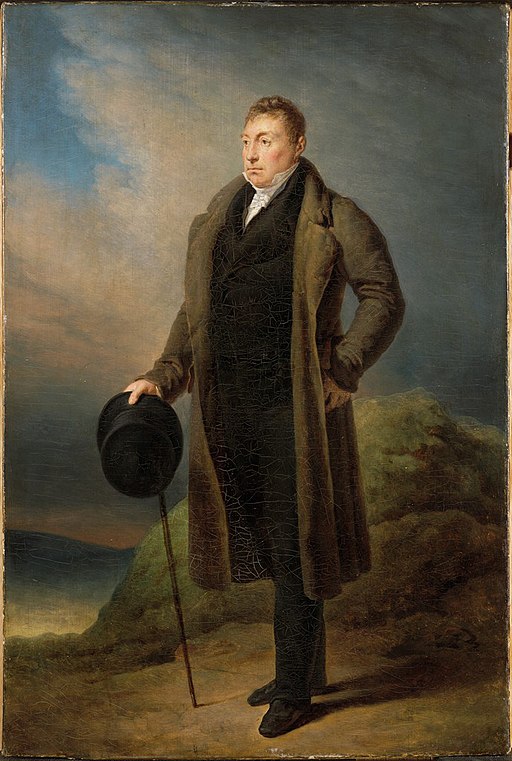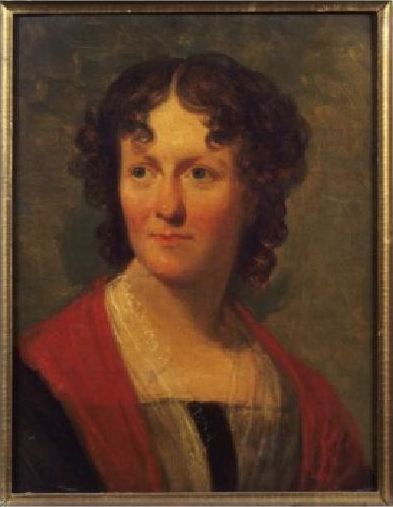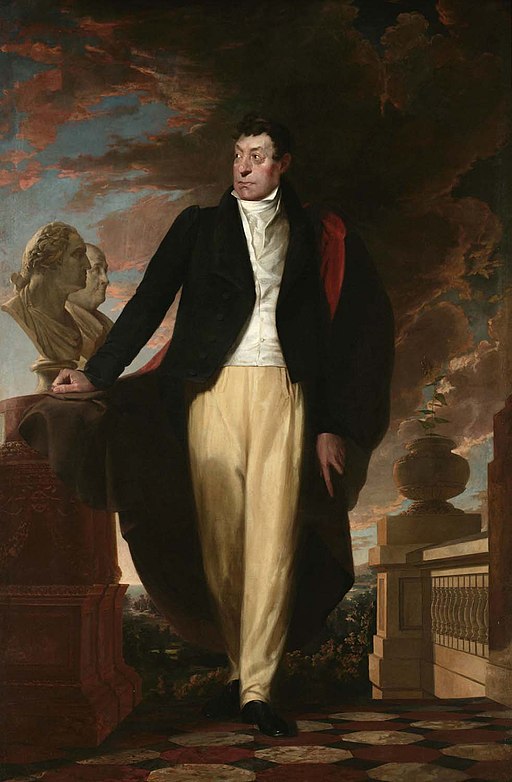Two hundred years ago, on Feb. 7, 1824, President James Monroe invited Revolutionary War hero Gen. Lafayette to the United States.
Earlier, Lafayette had expressed his wish to visit this country for the first time since he had left it in 1785 at age 28. A joint congressional resolution was introduced on Jan. 12 and passed both houses on Jan. 29. That 1824 was an election year did not deter Monroe, whose term would end in a year, from making the invitation in anticipation of the Republic’s 50th anniversary of independence. (READ MORE: What Made Rome, Rome?)
There were four presidential contenders: John Quincy Adams, Henry Clay, Andrew Jackson, and William Crawford. This was the election famous for being thrown into the House. Lafayette attended a dinner on the evening of Feb. 9, 1825, watched the House vote, and witnessed Adams and Jackson greet each other.

Lafayette was painted in 1819 by Ary Scheffer, who made two replicas in 1822–23 and sent one to the speaker of the house in 1824, where it has hung since Jan. 20, 1825 (Ary Scheffer/Harvard Art Museums/Wikimedia Commons)
After some delay and a month’s voyage, the man everyone now called “the Nation’s Guest” arrived on our shores on Aug. 15, 1824, intending to stay for four months. (The term “guest of the nation” first appeared in papers anywhere in the country in “Corporation Proceedings,” Alexandria [Va.] Gazette, on June 26, 1824, and “Nation’s Guest” first appeared in Richmond Enquirer, July 27, 1824.)
Lafayette extended his stay. From Aug. 15, 1824, until he departed on Sept. 7, 1825, he was feted each and every day of the 13 months. He was escorted from town to town by prominent townspeople. Carriages were built for the occasion (including one held by the Studebaker Museum in South Bend). He was lauded by speeches, poems, banquets, parades, and artillery salutes, governors, mayors, and elderly Revolutionary War veterans greeted him. People wore gloves and scarves bearing his image (800 of these objects are held by Lafayette College, Easton, Pennsylvania). (READ MORE: The Catholic Church Was Always Anti-Slavery: Listen to Paul Kengor Discuss on EWTN)
During his visit, places and streets were named or renamed in his honor — places like Lafayette Square in Washington, D.C., and Lafayette, Indiana. Papers throughout the country reported on all his doings and movements. In addition, papers reported on his life, especially his service during the Revolutionary War, and they published anecdotes of veterans. Readers were aghast at his imprisonment from 1792-1797 by French revolutionaries.
A young Frenchman, Julian Icher, founder of the Lafayette Trail, has been working with the American Friends of Lafayette to erect historical markers at each of Lafayette’s stops. During this bicentennial, there will be a number of reenactments. For example, one woman is planning reenactments of his visit to Fort McHenry (Baltimore), his address to the joint session of Congress, and his visits to Philadelphia and New York City. Another reenactment is planned in Lancaster, Pennsylvania.
Lafayette arrived at age 67 and traveled 6,000 miles by carriage and boat in his tour of all 24 states — the 13 original states and the 11 which had been admitted since: Vermont (1791), Kentucky (1792), Tennessee (1796), Ohio (1803), Louisiana (1812), Indiana (1816), Mississippi (1817), Illinois (1818), Alabama (1819), Maine (1820), and Missouri (1821).
Lafayette’s stops are well-documented, but here is a less-than-comprehensive list:
1824
I stop for a moment here with a reverential pause. Lafayette was accompanied on his trip by his son George Washington Lafayette and his personal secretary Auguste Levasseur. Levasseur’s memoirs of the trip were published in French in 1828 and English in 1829. He wrote about Lafayette’s Oct. 17 visit to Washington’s tomb:
The tomb is scarcely perceived amid the somber cypresses … Lafayette descended alone in the vault, and a few minutes thereafter reappeared, with his eyes overflowing with tears. He took his son and me by the hand, and led us into the tomb…. We knelt reverentially near his coffin, which we respectfully saluted with our lips; rising, we mingled our tears with his.
Lafayette then gave the following remarks, using handwritten notes:
The feelings, which on this awful moment oppress my heart don’t leave me the power of utterance. I can only thank you, my dear Custis [Washington’s adopted son, George Washington Parke Custis] for your precious gift [a sprig of cedar from the tomb] and pray a silent homage to the tomb of the greatest and best of men, my paternal friend.
1825
I wrote above that Lafayette was accompanied by his son and personal secretary. He also invited Frances Wright and her younger sister to join him. Frances was 28 and there were rumors — squelched — that they (a widower and an unmarried woman) were romantically involved. The Wright sisters traveled by a different boat to America and remained in this country after Lafayette returned to France.

Frances Wright painting by Henry Inman, 1824 (Henry Inman/Wikimedia Commons)
The sisters had been born in Scotland. They had toured the United States from 1818-1820 and Frances authored Views of Society and Manners in America (1821). She met Lafayette in France in 1821. She also authored A Few Days on Athens (1822) on Greek philosopher Epicurus. After her second tour of America, she authored A Plan for the Gradual Abolition of Slavery in the United States Without Danger of Loss to the Citizens of the South (1825). Frances even corresponded with Lafayette, Wright, Madison, and Jefferson before, during, and after the 1824-1825 tour.
In 1826, Samuel Morse, the portraitist who later invented the telegraph, completed his portrait of Lafayette.

Samuel Morse’s Lafayette in America, finished in 1826 (Samuel Finley Breese Morse/Wikimedia Commons)
As mentioned, Levasseur published his two-volume memoirs of the tour starting in 1828. In 1879, A.A. Parker wrote his 150-page Recollections of General Lafayette on His Visit, and a statue of Lafayette was erected in 1891 in Lafayette Square, Washington, D.C.
The American flag has flown over Lafayette’s grave since an aide to Pershing visited it in 1917. Two years later, the frontispiece to the book With Lafayette in America by Octavia Roberts quoted the Illinois Intelligencer: “When Lafayette is forgotten our enthusiasm for the cause of liberty will have departed and the hour of our slavery will have arrived.”
Edgar E. Brandon compiled his three-volume Lafayette, Guest of the Nation: A Contemporary Account of the “Triumphal Tour” of General Lafayette Through the United States in 1824-1825 during the years 1950 to 1957. There is a fourth, unpublished volume at Miami University, Oxford, Ohio. In 1989, Idzerda, Loveland, and Miller wrote their Lafayette, Hero of Two Worlds: The Art and Pageantry of His Farewell Tour of America, 1824-1825: Essays. The most-recent account of Lafayette’s trip, Marquis de Lafayette Returns: A Tour of America’s National Capital Region, was published this year by Elizabeth Reese, the chair of the American Friends of Lafayette Bicentennial Committee for Washington, D.C.
In 2002, Congress conferred posthumous U.S. citizenship on Lafayette.
On the 100th anniversary of Lafayette’s death on May 20, 1934, Secretary of State Cordell Hull said Lafayette’s farewell tour “inspired an enthusiasm becoming the people had resolved to be free.” Has there been any patriotic event in American history of similar magnitude — in the number of cities and duration — that has “inspired enthusiasm becoming the people’s resolve to be free”?
Perhaps the 1976 Bicentennial celebrated from April 1, 1975, to July 4, 1976, or the funeral train for Lincoln for three weeks through seven states. What about the Union’s “Grand Review” of two days in May 1865; Pershing’s victory parades in New York and Washington; V-E and V-J Days, which, while in many countries by millions of people, were sort-lived; ticker-tape parades for John Glenn in 1962 and 1998; a ticker tape parade for Neil Armstrong and Apollo 11 in 1969; or celebrations of national championships for collegiate or professional sports teams?
Although those events were large, I don’t think they’re in the same league.
